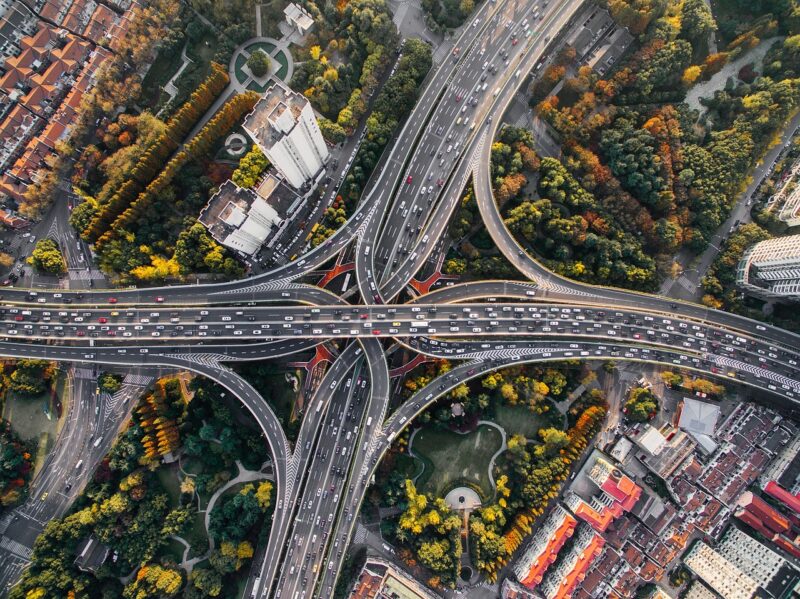The Evolution of Road Infrastructure and How It’s Shaping Modern Cities
November 12, 2024

Road infrastructure has evolved dramatically from ancient pathways to the complex networks we navigate today. Modern cities are shaped not just by the presence of roads but by the sophisticated systems that manage transportation, accessibility, and urban development. Understanding this evolution provides insight into how roads influence our daily lives and the environment around us.
1. Historical Overview of Road Development
The history of road infrastructure dates back thousands of years. Early civilizations constructed rudimentary paths that facilitated trade and travel, often linking settlements and fostering economic development. The Romans, known for their engineering prowess, created a vast network of roads that revolutionized transport across Europe, marking the beginning of organized road systems.
– The Roman Influence: Roman roads were engineered for durability and efficiency, utilizing materials like stone and gravel. These roads allowed for faster movement of armies, goods, and information, establishing logistics that would support the empire’s vast territories.
– Medieval and Renaissance Advances: Following the fall of the Roman Empire, road maintenance declined. However, during the Renaissance, road building gained prominence again, with monarchs investing in infrastructure to boost trade and travel.
– Industrial Revolution Innovations: The 18th and 19th centuries witnessed significant advancements in road construction, with the advent of macadamized roads and the development of asphalt paving. These innovations drastically improved transportation efficiency, paving the way for the automobile age.
2. The Automobile Boom and Its Impact on Urban Planning
The early 20th century brought about the mass production of automobiles, fundamentally transforming road use and urban environments. Cities expanded outward, as suburbs became accessible to workers commuting to urban centers.
– Urban Sprawl: The demand for road infrastructure increased as cities expanded. New highways and road systems were developed to alleviate traffic congestion and cater to the growing number of vehicles. However, this sprawl led to challenges such as increased pollution and urban heat islands.
– Highways and Freeways: The construction of interstate highways in the mid-20th century facilitated long-distance travel and freight transport, reshaping commerce and society. These thoroughfares contributed to a shift in lifestyle, as Americans increasingly relied on cars for mobility.
3. Modern Road Infrastructure: Smart Systems and Sustainability
In today’s context, road infrastructure development focuses on sustainability and technological innovation. Modern challenges such as traffic congestion, environmental preservation, and urban density demand sophisticated solutions.
– Smart Traffic Management: Incorporating technology into road systems enhances traffic flow and reduces accidents. Smart traffic signals, real-time monitoring systems, and automated traffic management enable efficient use of road networks.
– Sustainable Practices: Today’s road construction increasingly emphasizes sustainability. Techniques like permeable pavement and green infrastructure improve water management, mitigate flooding, and reduce environmental impact.
– Public Transportation Integration: Cities are recognizing the importance of integrating road infrastructure with public transport systems. By promoting buses, trams, and bicycles, urban planners aim to reduce dependency on private vehicles and decrease congestion.
4. The Role of Roads in Shaping City Life
Road infrastructure impacts city life significantly, influencing everything from economic activity to social interactions.
– Accessibility and Economic Growth: Well-designed road systems improve accessibility, stimulating local economies by providing easier access to businesses, services, and public resources. This connectivity encourages investment and promotes job creation.
– Social Dynamics: Roads can also delineate social boundaries within urban areas. Inequitable road infrastructure can lead to marginalization of specific communities, making it essential to consider equity in transport planning.
– Health Implications: Roads influence lifestyle choices, affecting physical activity levels and health outcomes. Urban areas with accessible walkways and biking lanes promote healthier living, while car-dependent cities often experience higher obesity rates and related health issues.
5. Future Trends in Road Infrastructure
The future of road infrastructure will be characterized by innovation and integration of technology, ensuring adaptability to evolving societal needs.
– Autonomous Vehicles: The rise of autonomous driving technology promises to revolutionize road usage. Integrating smart roads that communicate with vehicles can optimize traffic flow and improve safety.
– Electric Vehicle Infrastructure: As electric vehicles become more prevalent, cities must develop charging infrastructure within road systems to accommodate this transition and promote cleaner transportation options.
– Resilience against Climate Change: Future road planning will need to address environmental concerns, with a focus on designing infrastructure that can withstand climate change impacts, including flooding and extreme weather events.
Conclusion
The evolution of road infrastructure reflects the progress of civilization, paving the way for urban development and societal transformation. As we move further into the 21st century, the challenges of modern cities demand that we rethink and innovate our approach to road systems. By embracing sustainability, technology, and inclusivity, we can create road networks that not only serve as conduits for travel but also enrich the life of the urban fabric, supporting accessible, vibrant communities for generations to come.







